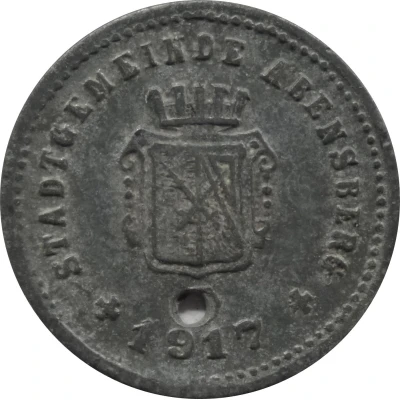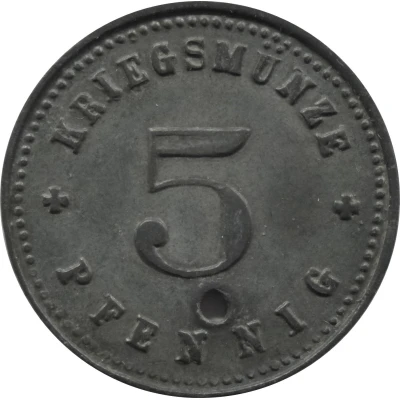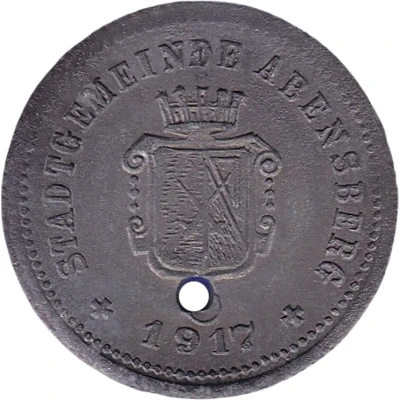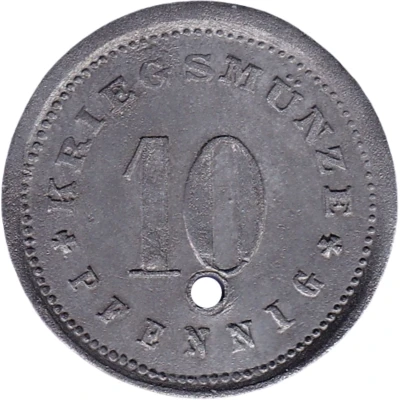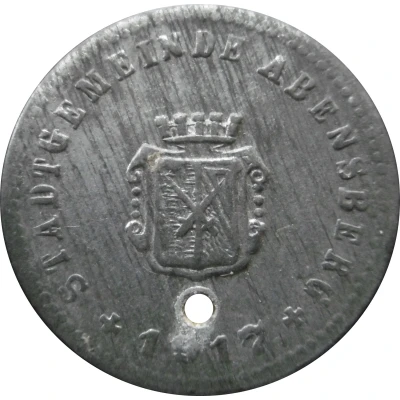
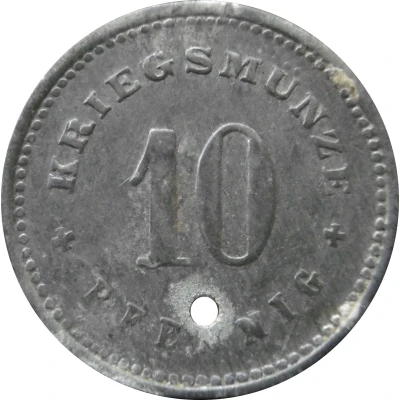

© Willem63 (CC BY-NC-SA)
10 Pfennigs - Abensberg
1917 year| Zinc | 2.3 g | 22.0 mm |
| Issuer | City of Abensberg (Federal state of Bavaria) |
|---|---|
| Emperor | William II (Wilhelm II) (1888-1918) |
| Type | Standard circulation coin |
| Year | 1917 |
| Value | 10 Pfennigs (10 Pfennige) (0.10) |
| Currency | Mark (1914-1924) |
| Composition | Zinc |
| Weight | 2.3 g |
| Diameter | 22.0 mm |
| Thickness | 1.0 mm |
| Shape | Round with a round hole (Hole 2mm) |
| Technique | Milled |
| Orientation | Medal alignment ↑↑ |
| Demonetized | Yes |
| Updated | 2024-10-04 |
| Numista | N#298691 |
|---|---|
| Rarity index | 91% |
Reverse
Beaded rim, legend surrounding denomination centered
Script: Latin
Lettering:
KRIEGSMÜNZE
10
✚ PFENNIG ✚
Edge
Plain
Interesting fact
The 10 Pfennigs - Abensberg 1917 coin was minted during a time of economic turmoil in Germany, known as the "Inflationary Period" (1914-1924). During this time, the value of the German mark (the national currency) plummeted, and prices for everyday goods skyrocketed. As a result, many Germans turned to alternative forms of currency, such as local emergency currencies like the 10 Pfennigs - Abensberg 1917 coin. This coin, made of zinc and weighing 2.3 grams, was issued by the City of Abensberg in Bavaria and was used as a substitute for the rapidly devaluing national currency. Despite its humble appearance, this coin is a fascinating piece of history that highlights the economic challenges faced by Germany during World War I and the subsequent inflationary period.
